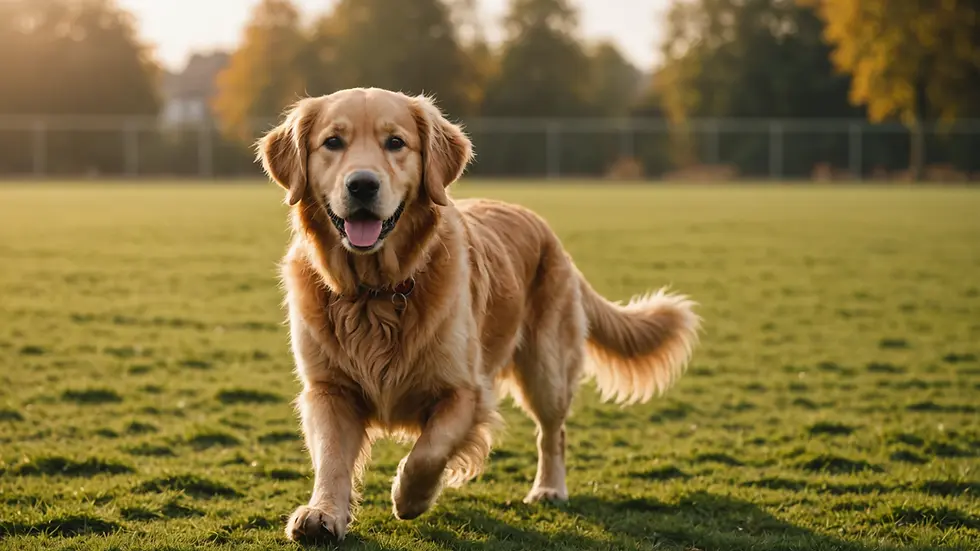Unleashing the Power of Trust: How to Build Unbreakable Confidence in Your Canine Companion
- Donte B.
- Jan 14
- 3 min read
Training your dog goes beyond teaching basic commands like sit or stay; it’s about building a deep bond rooted in trust and mutual respect. When your dog views you as a dependable leader, they are more inclined to respond positively to your cues. In this post, we explore the importance of trust during training sessions, offering practical strategies that can turn learning experiences into joyful adventures for both you and your canine friend.

Understanding the Foundation of Trust
Building trust with your dog starts by recognizing their needs. Dogs are social creatures that thrive on guidance and reassurance from their human companions. Training should create a safe space where your dog feels comfortable exploring and learning.
Consistency is Key: Dogs thrive on predictability. Use the same commands for each behavior, maintain a regular training schedule, and promptly respond to your dog’s needs. For instance, using "sit" every time you want them to sit reinforces their understanding.
Positive Reinforcement: Encouragement—through treats, praise, or play—creates enjoyable training experiences that boost your dog's confidence. Studies show that dogs trained with positive reinforcement are more eager to learn and less prone to anxiety. This approach builds a loving partnership over time.

Communication is Key
Clear communication is essential for building trust. Dogs are adept at interpreting human emotions and body language, so a calm and confident demeanor during training is vital. Here are a few tactics to improve your communication skills:
Use Clear Commands: Simple and direct commands help your dog understand your expectations. For example, saying "come" instead of a longer phrase facilitates quick responses, minimizing confusion.
Body Language Matters: Non-verbal cues can significantly impact your dog’s response. Maintain an open stance, and avoid pointing or harsh gestures. Using inviting gestures encourages engagement.
Tone of Voice: Dogs respond to the tone of your voice. Use a cheerful tone for commands and a firmer tone for corrections. This variance helps your dog distinguish between praise and areas needing improvement.
By creating an effective communication loop, you reinforce your dog's trust that you are guiding them in the right direction.
Building Confidence Through Successful Training Techniques
As you begin your training journey, there are several proven techniques to boost your dog’s confidence and reinforce trust:
Start with the Basics: Dedicate early sessions to essential commands like sit, down, and stay. For example, mastering "sit" can take a few days, but it serves as a foundation for other commands.
Short Sessions: Keep training sessions short—5 to 10 minutes is ideal. This timeframe aligns with a dog's attention span and keeps them eager to learn.
Frequent Breaks: Regular breaks during training allow your dog time to relax and absorb new information. This technique prevents fatigue and helps them process what they've learned.
Celebrate Small Wins: Celebrate every success, no matter how minor! If your dog sits when asked, reward them enthusiastically. These positive experiences create happy associations with training.
Introduce Variety: Change up your training routine by altering commands, locations, and activities. For instance, practicing in new settings, like the park, keeps your dog engaged and curious.
By applying these techniques, you will teach your dog vital skills while also boosting their confidence in every situation.

Patience: The Virtue of Training
Training a dog requires patience and understanding. Every dog learns at their own pace. While some may quickly grasp commands, others may take longer. Keep a positive mindset and adjust your methods based on your dog’s responses.
Avoid punishment or negative reinforcement. This can damage the trust you’ve worked hard to establish. Instead, focus on redirecting behavior and offering encouragement. If your dog makes a mistake, gently guide them back and provide reassurance.
Building Lasting Trust
The bond of trust between you and your dog is the foundation for effective training and a thriving relationship. By focusing on consistency, clear communication, successful training techniques, and boundless patience, you'll nurture a relationship grounded in trust.
Over time, your dog will not only become more confident but will also see you as their true partner—someone who guides them on their learning journey. Embrace the power of trust today, and enjoy a rewarding relationship filled with adventure.
Trust lays the groundwork for a loving partnership, leading your dog to become a well-adjusted companion that enriches your life in countless ways. Happy training!







Comments